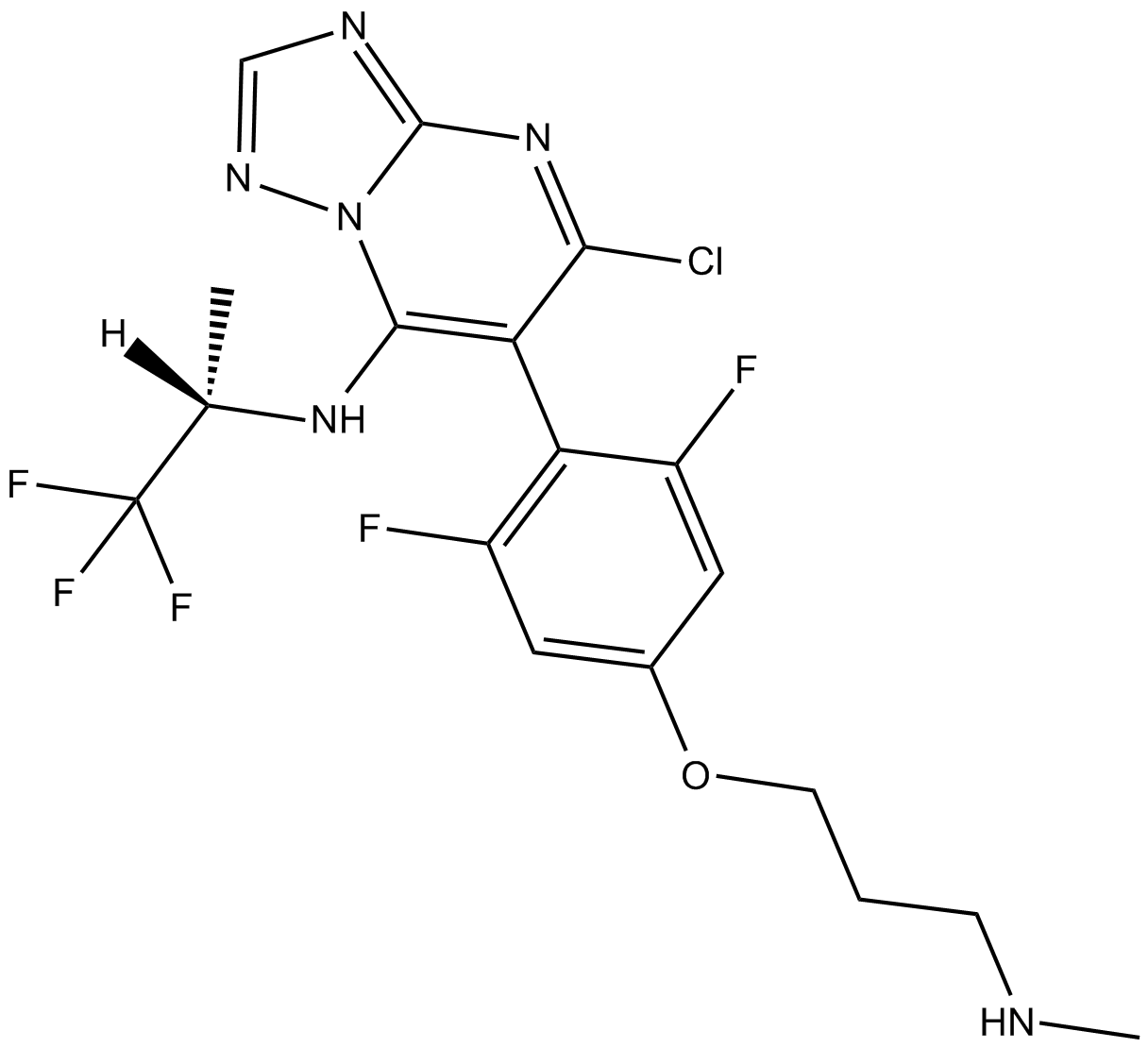Cevipabulin (Synonyms: TTI-237) |
| Catalog No.GC11905 |
La cévipabuline (TTI-237) est un composé antitumoral oral actif sur les microtubules et inhibe la liaison de la [3H] vinblastine À la tubuline, avec une CI50 de 18 À 40 nM pour la cytotoxicité dans la lignée cellulaire tumorale humaine.
Products are for research use only. Not for human use. We do not sell to patients.

Cas No.: 849550-05-6
Sample solution is provided at 25 µL, 10mM.
Cevipabulin (TTI-237) is a new anti-microtubule agent [1][2][3][4].
Microtubules are a component of the cytoskeleton that participate in many crucial cellular functions, include maintaining the structure of the cell, forming the cytoskeleton and chromosome separation.
Cevipabulin (TTI-237) is a new anti-microtubule agent with antitumor activity. In COLO 205 cells, TTI-237 inhibited cell proliferation with IC50 value of 31 nM [1]. At low ratios of TTI-237: tubulin heterodimer (about 1:30), TTI-237 increased depolymerization kinetics in response to low temperature, but stabilized the aggregates at high ratios (about 1:4). TTI-237 inhibited the exchange of [3H]GTP at the exchangeable nucleotide site of the tubulin heterodimer [2]. Cevipabulin (TTI-237) increased tubulin polymerization. Cevipabulin was stable and water-soluble, and could be administered i.v. or p.o. in saline [3]. TTI-237 inhibited the binding of [3H]vinblastine to tubulin, but significantly increased turbidity development that more closely resembled the effect of docetaxel. In Hela cells, TTI-237 (34 nmol/L) induced multiple spindle poles and multi-nuclear cells. At 20-40 nmol/L, TTI-237 produced sub-G1 nuclei, while at > 50 nmol/L, TTI-237 induced G2-M block.
In athymic mice bearing LoVo human colon adenocarcinoma, TTI-237 exhibited good antitumor activity in a dose-dependent way. In mice bearing U87-MG human glioblastoma, TTI-237 (25 mg/kg) given both i.v. and p.o. were equally effective [4].
References:
[1]. Zhang N, Ayral-Kaloustian S, Nguyen T, et al. 2-cyanoaminopyrimidines as a class of antitumor agents that promote tubulin polymerization. Bioorg Med Chem Lett, 2007, 17(11): 3003-3005.
[2]. Beyer CF, Zhang N, Hernandez R, et al. The microtubule-active antitumor compound TTI-237 has both paclitaxel-like and vincristine-like properties. Cancer Chemother Pharmacol, 2009, 64(4): 681-689.
[3]. Ayral-Kaloustian S, Zhang N, Beyer C. Cevipabulin (TTI-237): preclinical and clinical results for a novel antimicrotubule agent. Methods Find Exp Clin Pharmacol, 2009, 31(7): 443-447.
[4]. Beyer CF, Zhang N, Hernandez R, et al. TTI-237: a novel microtubule-active compound with in vivo antitumor activity. Cancer Res, 2008, 68(7): 2292-2300.
Average Rating: 5 (Based on Reviews and 8 reference(s) in Google Scholar.)
GLPBIO products are for RESEARCH USE ONLY. Please make sure your review or question is research based.
Required fields are marked with *




















